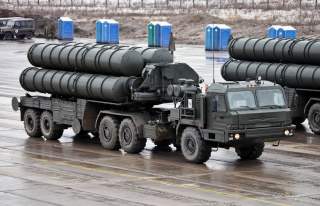5 Chinese Weapons of War Japan Should Fear
Why Tokyo should be concerned over Beijing's rising military might.
The rest of Japan — including Okinawa, Kyushu, and even Honshu — is at least 700 kilometers from the Chinese mainland. Smaller, shorter-legged planes such as the J-10 can’t get their on their own and will need the ability to refuel in midair. The ability to refuel in midair also increases the number of aircraft and airfields in China that can participate in a conflict.
The Il-78 tanker is a critical link in the People’s Liberation Army Air Force’s power projection strategy. The Il-78 is a Russian Il-76 cargo aircraft converted to aerial tanker, and carries enough fuel to fill the tanks of a J-10 multirole fighter 20 times over. Trailing three refueling hoses behind it, the Il-78 can refuel three aircraft at once.
China tried to purchase a number of Il-78 tankers from Russia in 2005, but the Uzbekistan plant that Russia relied on for manufacturing the airframe was unable to produce them. However, China has reportedly purchased three from Ukraine, and at least one of them appears to have been delivered, based on satellite imagery from late last year. Beijing has also signed deals for more Il-76 planes, likely to convert them to tankers, but production problems in Russia have mean only a handful have been delivered. Until China addresses its tanker shortfall, the PLAAF’s ability to project substantial airpower in a conflict with Japan will be seriously limited.
In wartime such a critical capability will be a critical vulnerability. If China’s tankers were to be shot down, the PLAAF’s reach would be shortened dramatically, limiting its ability to prosecute the war. This will make the tankers prime targets for the Japanese Air Self Defense Force.
Kyle Mizokami is a writer based in San Francisco who has appeared in The Diplomat, Foreign Policy, War is Boring and The Daily Beast. In 2009 he cofounded the defense and security blog Japan Security Watch. You can follow him on Twitter: @KyleMizokami.
Image: Wikimedia Commons

